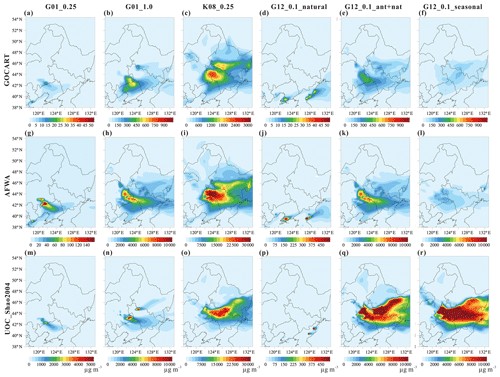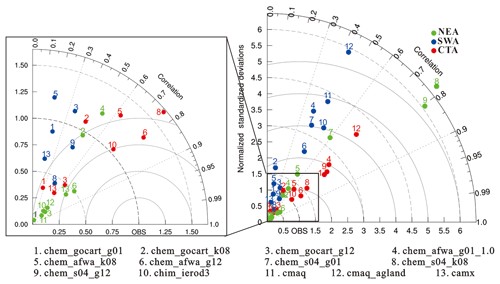Mineral dust particles play an important role in the Earth system, imposing a variety of effects on air quality, climate, human health, and economy. Accurate forecasts of dust events are highly desirable to provide an early warning and inform the decision-making process. East Asia is one of the largest dust sources in the world. The selection and usage of dust emission schemes and their input datasets are very important in establishing reliable air quality prediction.
Recently, researchers at Northeast Institute of Geography and Agroecology of Chinese Academy of Sciences presented a comprehensive evaluation of multi-model simulations of windblown dust emissions in air quality models during a dust episode in East Asia, using a number of dust emission schemes with four state-of-the-art air quality models(CMAQ v5.2.1, WRF-Chem v3.9.1, CHIMERE v2017r4, and CAMx v6.50).This study focuses on northeastern China, a unique dust source region with varying land-use types, including deserts, semiarid land, and croplands. In addition, this region is known for diverse soil texture and organic content.All of these characteristics present challenges for numeric models to predict dust storms, making northeastern China an ideal region for assessing the capability of dust models.

Fig. 1.Daily mean PM10 distributions in NEC on 5 May 2015 using GOCART, AFWA, and UOC_Shao2004 with each source map; (a–e) GOCART, (g–l) AFWA, and (m–r) UOC_Shao2004.
Most of these models were able to capture this dust event with the exception of CAMx, which has no dust source map covering the study area; hence, another dust source mask map was introduced to replace the default one for the subsequent simulation. Although these models reproduced the spatial pattern of the dust plume, there were large discrepancies between predicted and observed PM10 concentrations in each model. In general, CHIMERE had relatively better performance among all simulations with default configurations. After parameter tuning, WRF-Chem with the Air Force Weather Agency (AFWA) scheme using a seasonal dust source map from Ginoux et al. (2012) showed the best performance, followed by WRF-Chem with the UOC_Shao2004 scheme, CHIMERE, and CMAQ. The performance of CAMx had significantly improved by substituting the default dust map and removing the friction velocity limitation.

Fig. 2. Taylor diagram comparing the hourly PM10 concentrations of simulations with in situ measurements for three regions of NEC described in Fig. 2 (CTA, red circles; SWA, blue; NEA, green).
This study suggested that the dust source maps should be carefully selected on a regional scale or replaced with a new one constructed with local data. Moreover, further study and measurement of sandblasting efficiency of different soil types and locations should be conducted to improve the accuracy of estimated vertical dust fluxes in air quality models.Source code errors in the air quality models need to be further debugged. In addition, a physically based direct aerodynamic dust entrainment scheme or empirical parameterization should be implemented in the models to enhance the regional air quality forecast ability for particulates.
Relevant research results were published in Geosentific Model Development.
Article Link:https://doi.org/10.5194/gmd-12-4603-2019
Contact:
Xuelei Zhang Ph.D.
Northeast Institute of Geography and Agroecology, CAS
Tel:+86-431-85542314
E-mail: zhangxuelei@neigae.ac.cn